Breitling
Watches Go Green
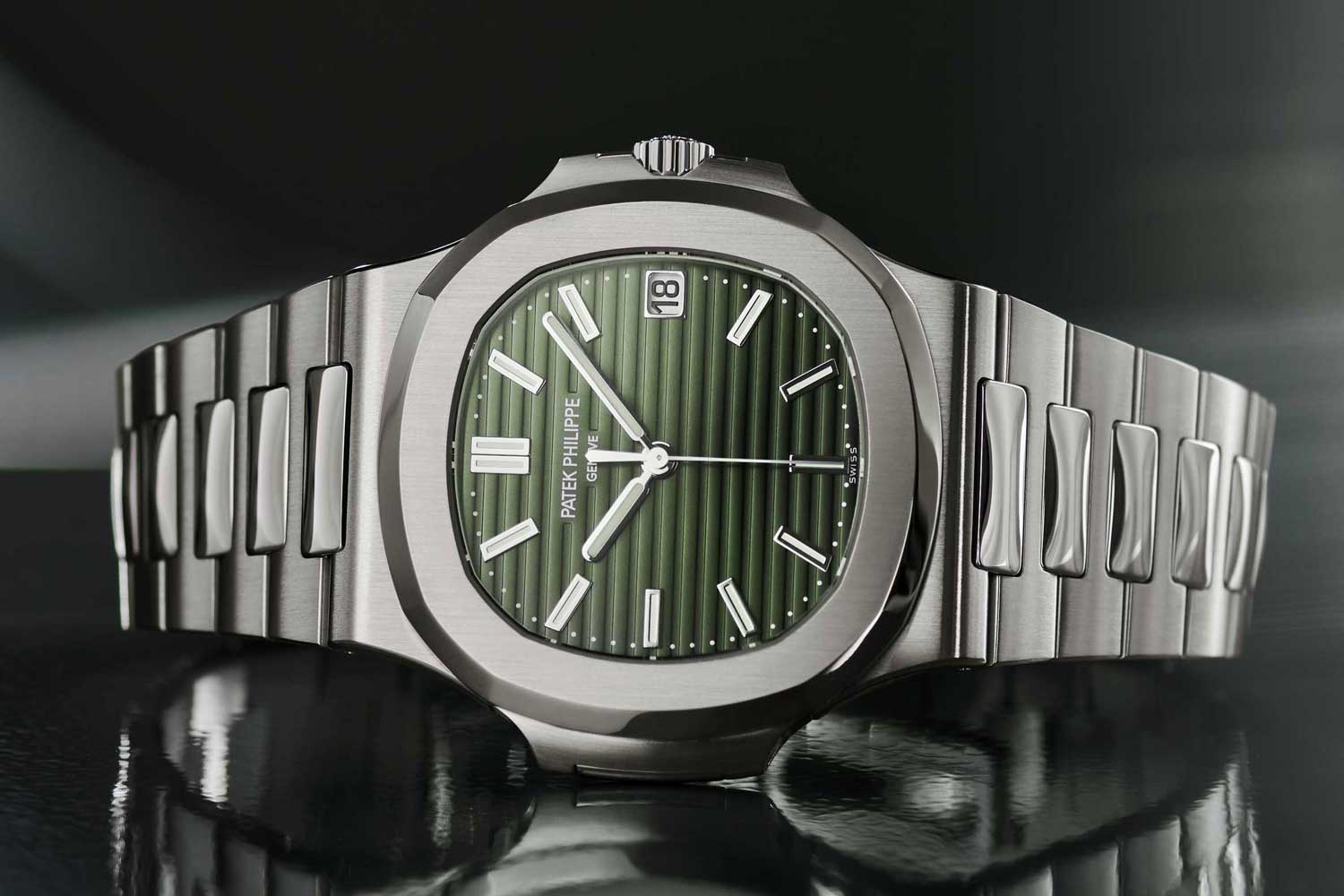
Patek Philippe ref. 5711/1A-014 introduced in April this year.
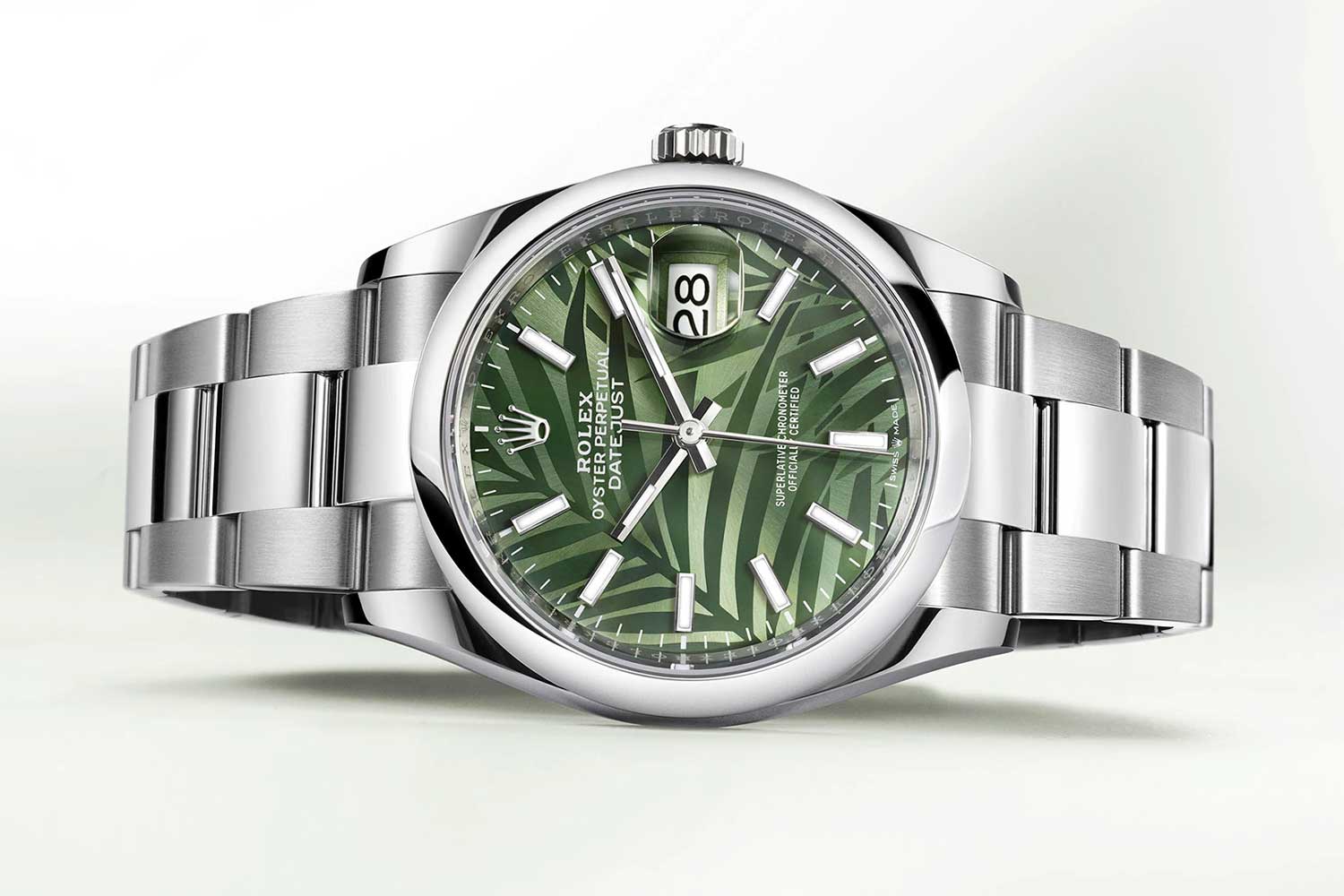
The Rolex Datejust 36 featuring new "Palm" and "Fluted" dial motifs.
Sustainability is Luxury
Of course, sustainable business is good for the planet and the bottom line. Consumers of luxury products — like watches — are becoming younger, with millennials and Generation Z driving growth in the luxury sector. These consumers, as countless studies tell us, are prepared to put their money where their values are, and — you guessed it — sustainability and ethical production are increasingly important for these audiences.
Richemont, the corporate group behind Cartier, IWC, Panerai and many other luxury producers, as well as significant retailers YOOX Net-a-Porter and Watchfinder, are well aware of the importance of sustainability and ethical production to young people. So much so that as part of its new Transformational Strategy launched in 2019, Richemont conducted research exclusively with people under 25. In the 2020 report, Richemont acknowledged that not only did Generation Z make up an important stakeholder group as employees, but an increasingly significant consumer group as well, particularly in the Asia-Pacific region. In this stakeholder analysis, climate change and environmental impact, in particular, the transparency and traceability of raw materials, were identified as the highest priority for both stakeholders and the business. As part of this process, Richemont has committed to meeting the science-based targets of the Paris Agreement, notably using 100 percent renewable energy by 2025. This strategy sees change focusing on people, communities, sourcing and the environment as a way to move towards “Better Luxury.” Richemont has laid out a comprehensive and ambitious road map of goals, which covers everything from the boring-but-very-important development of a “waste taxonomy” to increasing the percentage of responsibly sourced raw materials.
Of course, the shift to sustainable practice isn’t just taking place in head offices, as mandated by wide-sweeping strategy documents. Sustainability is increasingly being incorporated into watch design and production, and if the increasing cadence we’ve seen in the last few years is anything to go by, it’s going to become more important in the coming years.
Cartier and Design for Good
There’s an inherently linked relationship between sustainability and luxury — especially when it comes to watches. A well-made watch is perfectly capable, with proper care, of doing its job for decades, or even centuries. The technology is mechanically stable, and watchmakers pride themselves on fighting against the built-in obsolescence that is so prevalent in other product categories. The challenge, as any watch lover can attest to, is creating a watch that people will want to wear for decades. Because while the caliber inside might be up to the task, tastes change.
This is where Cartier comes in. The maison has mastered the art of timeless design and beauty. The Tank is as relevant today as it was a century ago. In speaking about the necessity of beauty, Cartier CEO Cyrille Vigneron says: “Beauty is more important than novelty. And when it comes to functionality, the truth is we need this less and less, especially when we are surrounded at every moment by so much technology. But why do you have an expensive watch if it is not so functional? Here you need to understand it is about a sense of beauty … A beautiful design doesn’t age. This is the power of Cartier’s designs. They are ageless, and they do not lose their relevance. For example, the Love bracelet has never been more popular, but many people don’t realize that it was created 60 years ago. Or the Tank Must… the new generation will see it and like it, and if they ask when it was first created, we tell them it was about 100 years ago. When we talk about things that are truly transcendental, we always arrive back at design and beauty, and following a global crisis, this is what we need more than ever to uplift us. This is the necessity of beauty. When watchmakers focus too much on function and not enough on design, they are in some ways missing what we are yearning for today. Beauty is the key to being timeless yet timely.”

Cartier CEO Cyrille Vigneron, a firm believer in the inherent sustainability of beauty
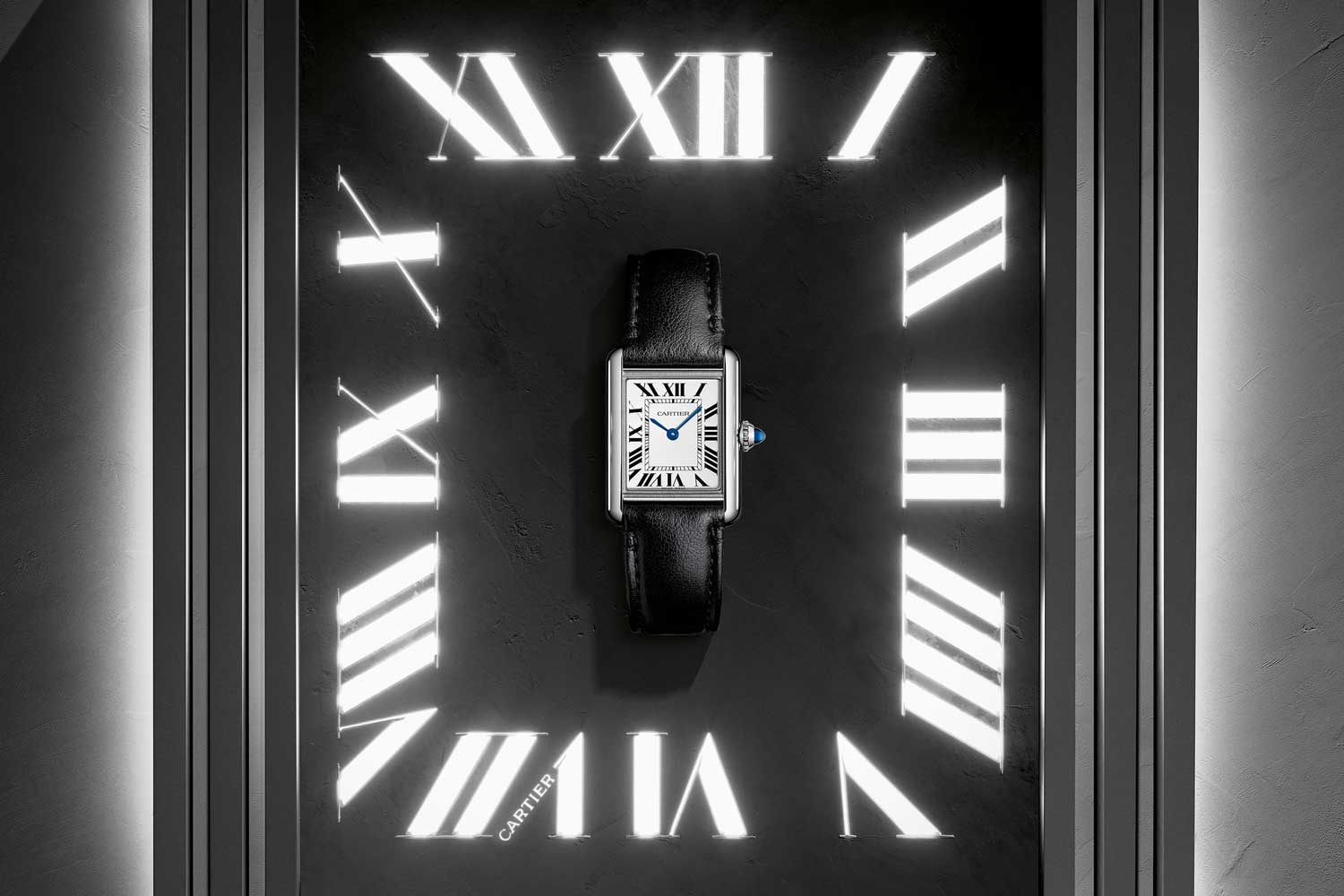
With an innovative solar-powered quartz movement, the Cartier SolarBeat Tank Must is the first in a new generation of eco-friendly luxury timepieces
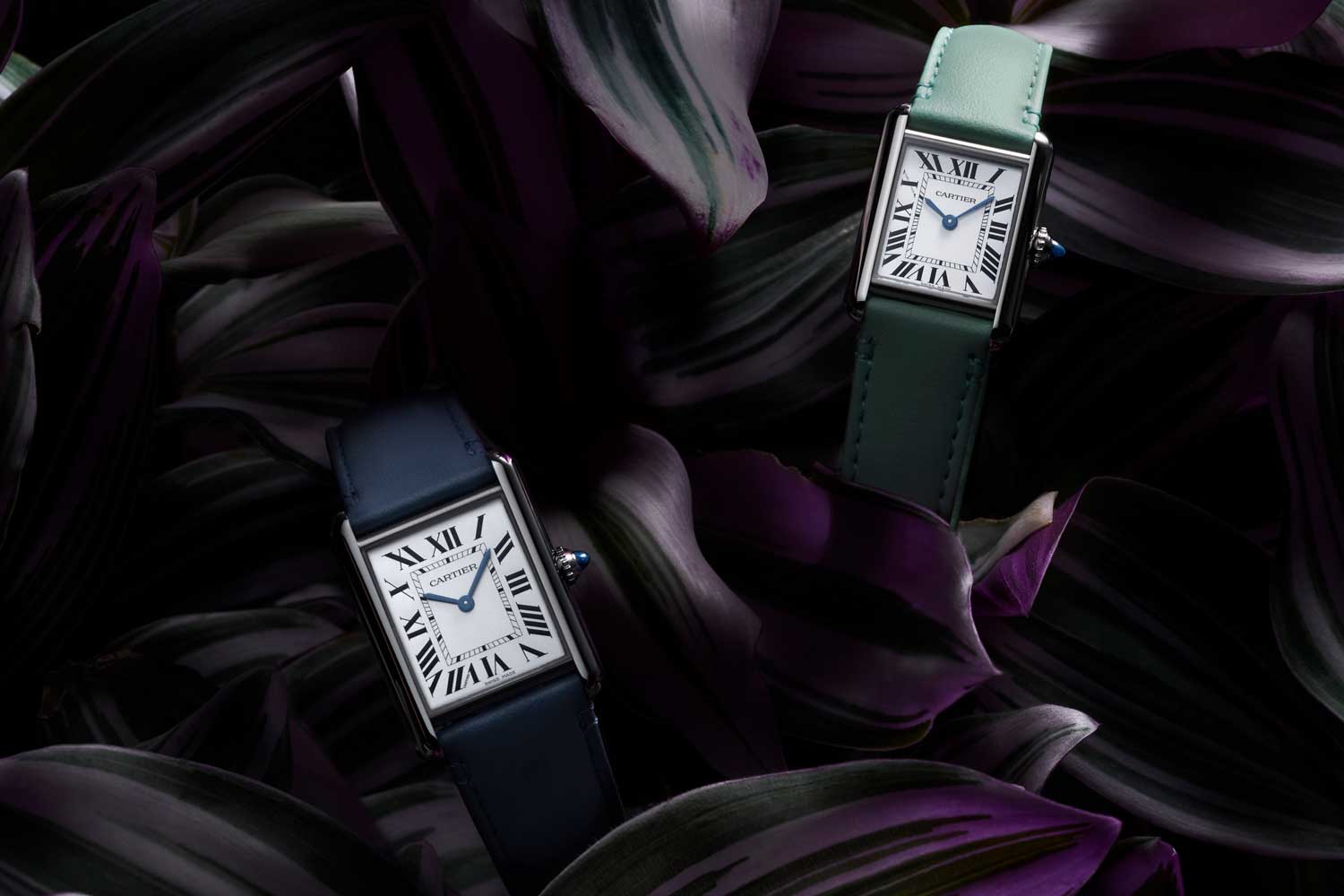
(Image: Revolution©)
Chopard and Material Change
Few luxury brands have been so visible and consistently dedicated to improving their own sustainability as Chopard. The family-owned house is an industry leader when it comes to responsible business practices and advocacy. Gold is the precious metal upon which much of the luxury watch and jewelry business is built. Getting the raw material out of the ground though is, more often than not, a damaging, environmentally dirty business. Extracting gold is energy-intensive, involves the extensive use of cyanide, as well as other heavy metal pollutants and massive amounts of waste. It’s estimated that to produce enough raw gold for a single ring, some 20 tons of mineral waste is created. And while the jewelry industry isn’t the only user of gold — it’s significant in electronics and investment, for example — it is a major consumer of the resource.
The problematic production of this precious metal isn’t news to the Swiss industry, with many groups working to responsibly and transparently source raw materials like gold and gems. Few, though, have worked to transform their business practices as effectively as Chopard.
As of 2018, 100 percent of gold used by Chopard in their watches and jewelry was ethically sourced, either through small-scale artisanal freshly mined sources or responsibly extracted gold. In 2022, Chopard aims to source 60 percent of its gold from artisanal and small-scale producers. Gold sourced in this way has a smaller environmental footprint and more positive socio-economic impacts. Chopard takes the same care with its diamonds and colored gemstones, working with peak industry bodies to ensure integrity and a transparent supply chain.
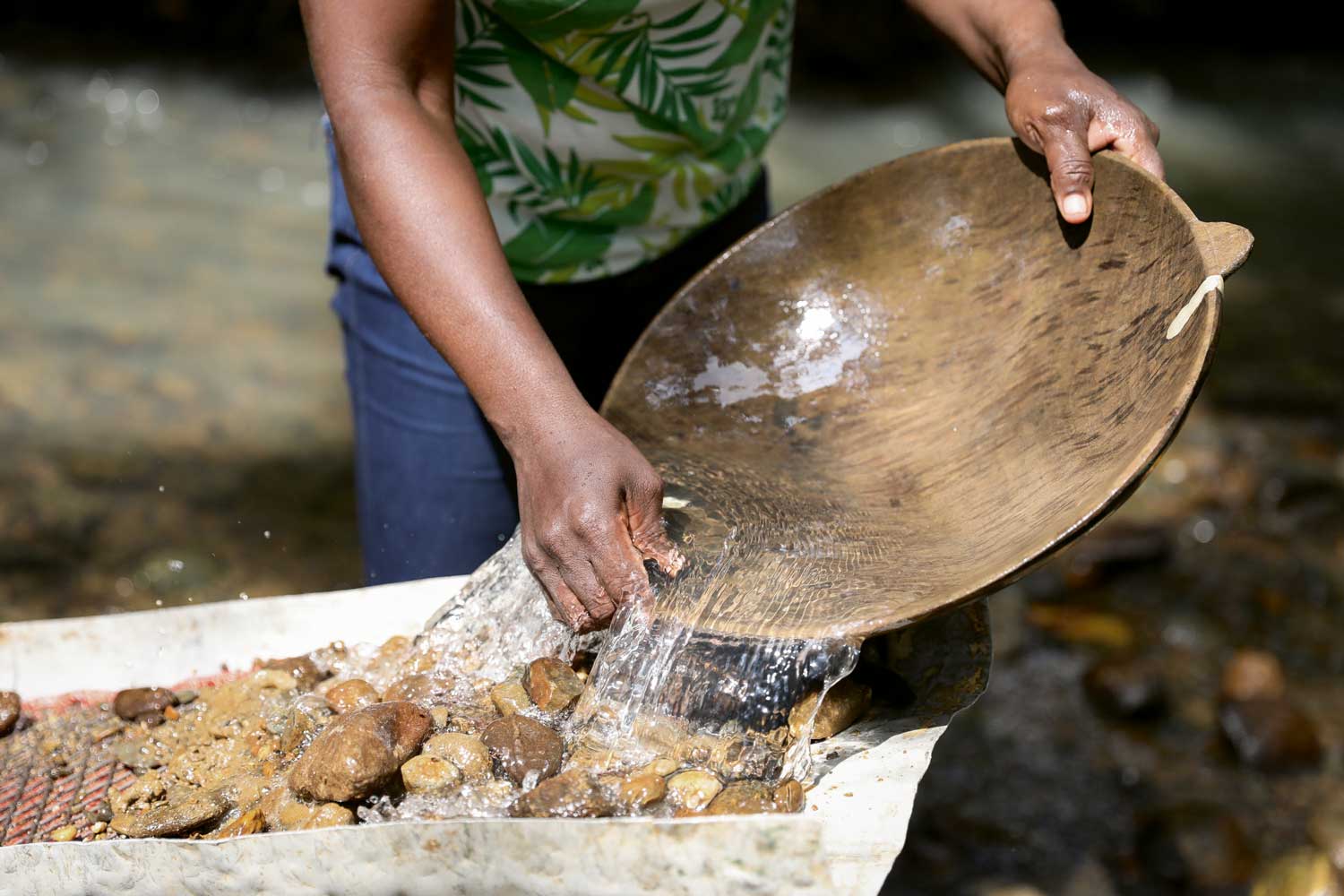
Chopard works with artisanal, ethical gold-suppliers to minimise the environmental and socio-economic impact of mining
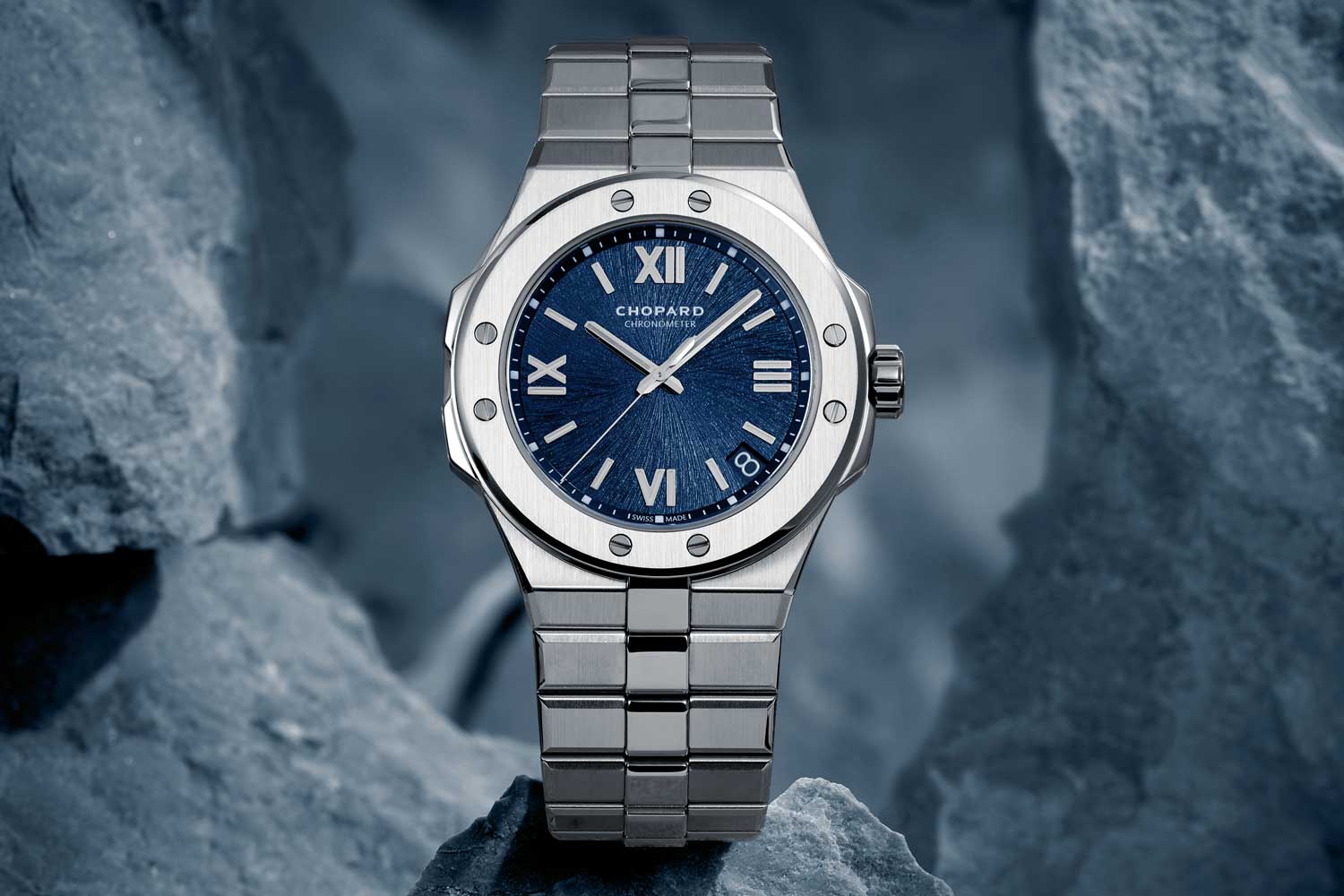
With a bold design and a case made from Lucent Steel A223, the Alpine Eagle paves the way for sustainable steel

Karl, Karl-Friedrich & Karl-Fritz Scheufele. Three generations who believe in running Chopard as an environmentally responsible business
Storytelling and Science
Aside from the intrinsic value and practical uses, watches are about stories. Over the years, watch brands have become very good at telling those stories and weaving them into the watches they make. Increasingly, those stories are about the planet on which we all live and how to look after it.
Oris, for example, regularly makes limited editions with philanthropic goals, with numerous limited editions aimed at raising awareness around the plight of coral reefs. According to the Coral Restoration Foundation that Oris partners with, these vitally important marine habitats that are home to 25 percent of all fish species have diminished by 50 percent in the last 30 years.
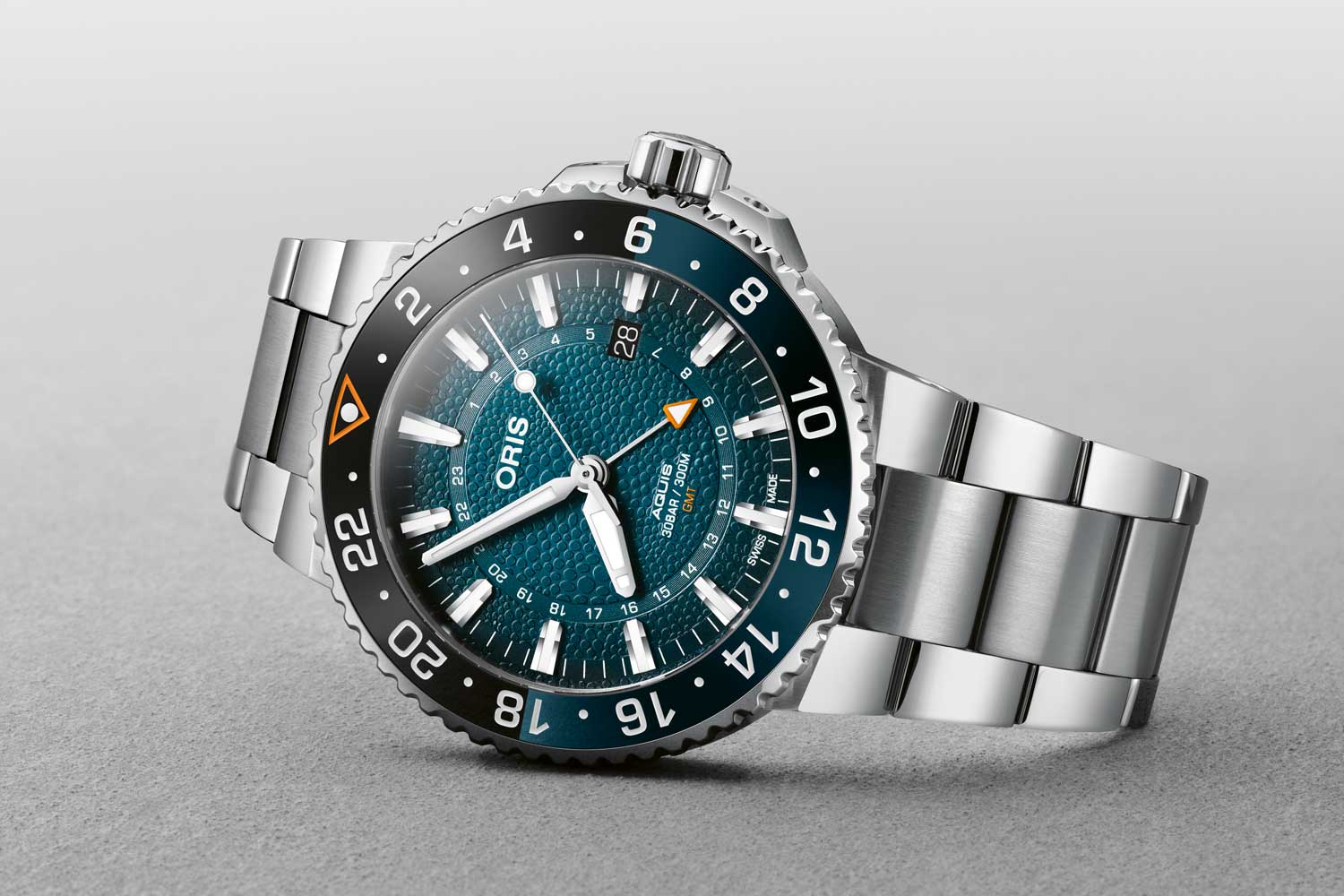
Oris Whale Shark Limited Edition Aquis
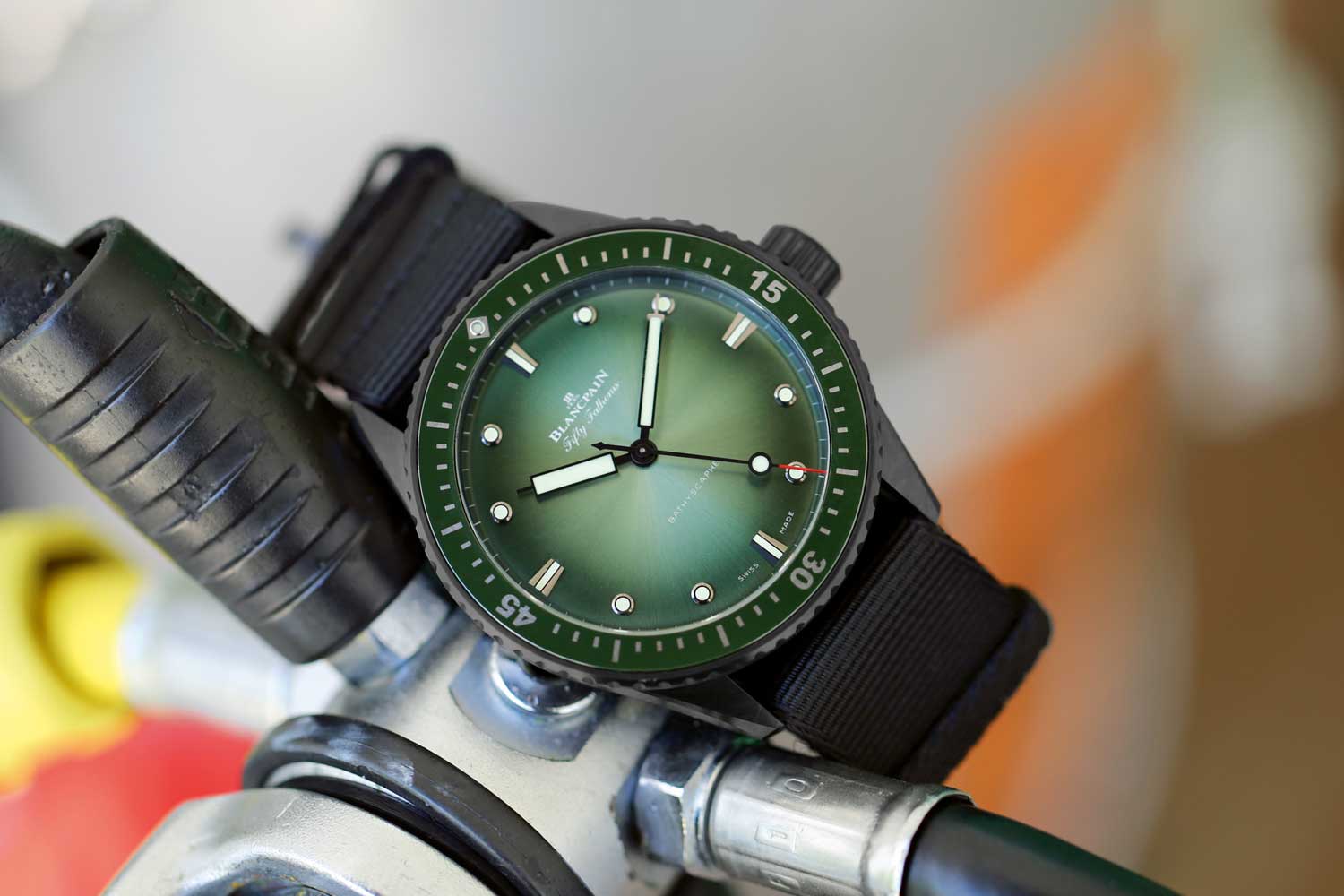
Blancpain Bathyscaphe Mokarran Limited Edition

Blancpain’s Ocean Commitment actively supports important scientific and marine conservation projects across the globe
Straps, Boxes and Papers
Not every sustainable change has to be a complete overhaul of a watch’s fundamental structure. Incremental changes are worthwhile too. Have you ever considered the environmental impact of the traditionally oversized watch box and all the associated paperwork? Breitling has. In 2020, the brand announced that they were ditching the large, glossy wood boxes that invariably end up at the back of the closet in favor of smaller, eco-friendly packaging alternatives. Not only does this mean fewer materials used in production, but also much less energy required to transport that packaging around the planet. Breitling’s solution — in addition to having a smaller footprint — is flat-packable for even more transport efficiency. On top of that, the boxes are made from recycled PET plastic. In a similar vein, brands like Panerai have ceased supplying physically printed booklets with their watches, offering digital alternatives instead. It’s 2021; boxes and physical papers on a new watch simply aren’t relevant anymore.
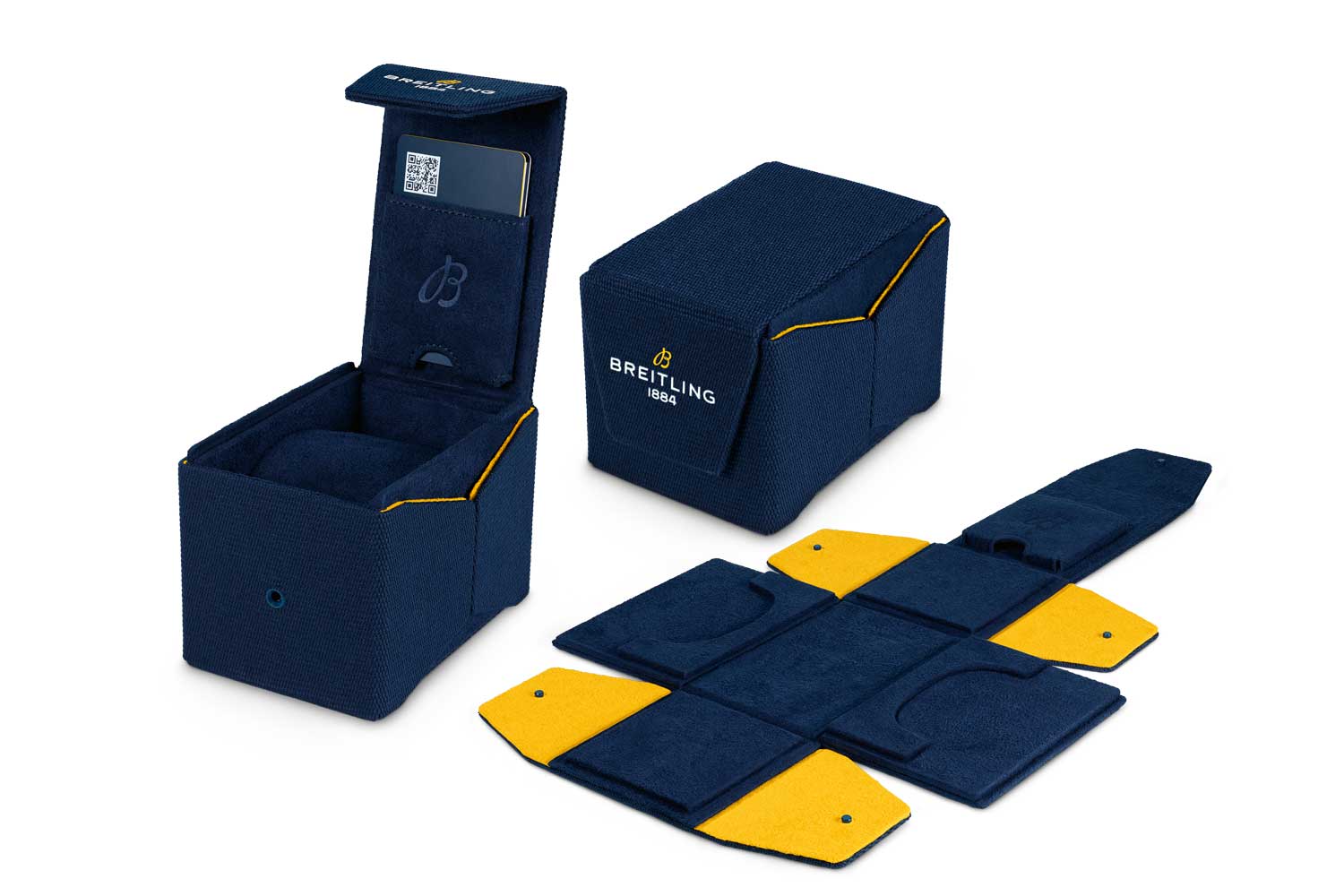
Breitling's flat-packed packaging is a less wasteful way forward
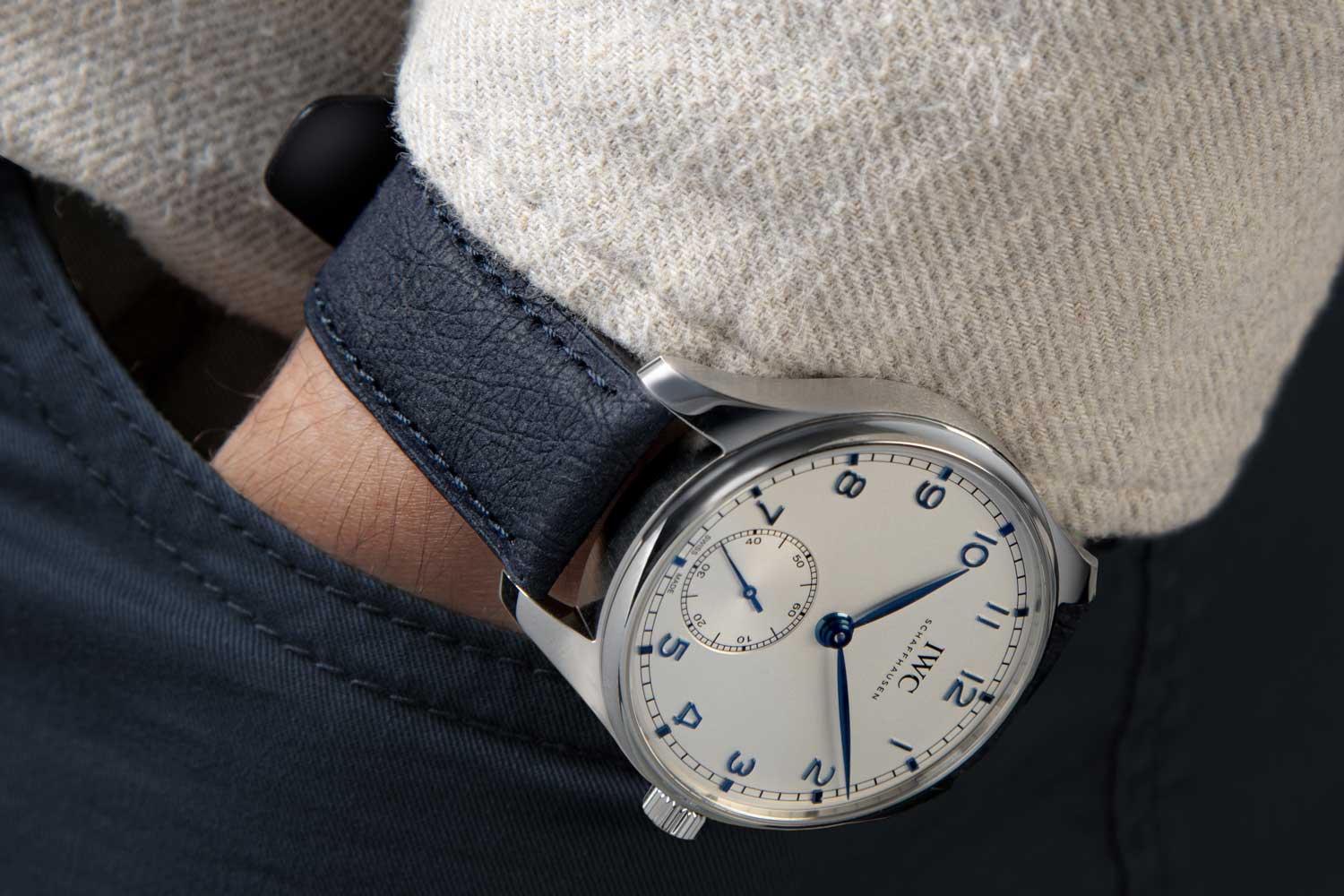
IWC new paper-based Timbertex watch straps
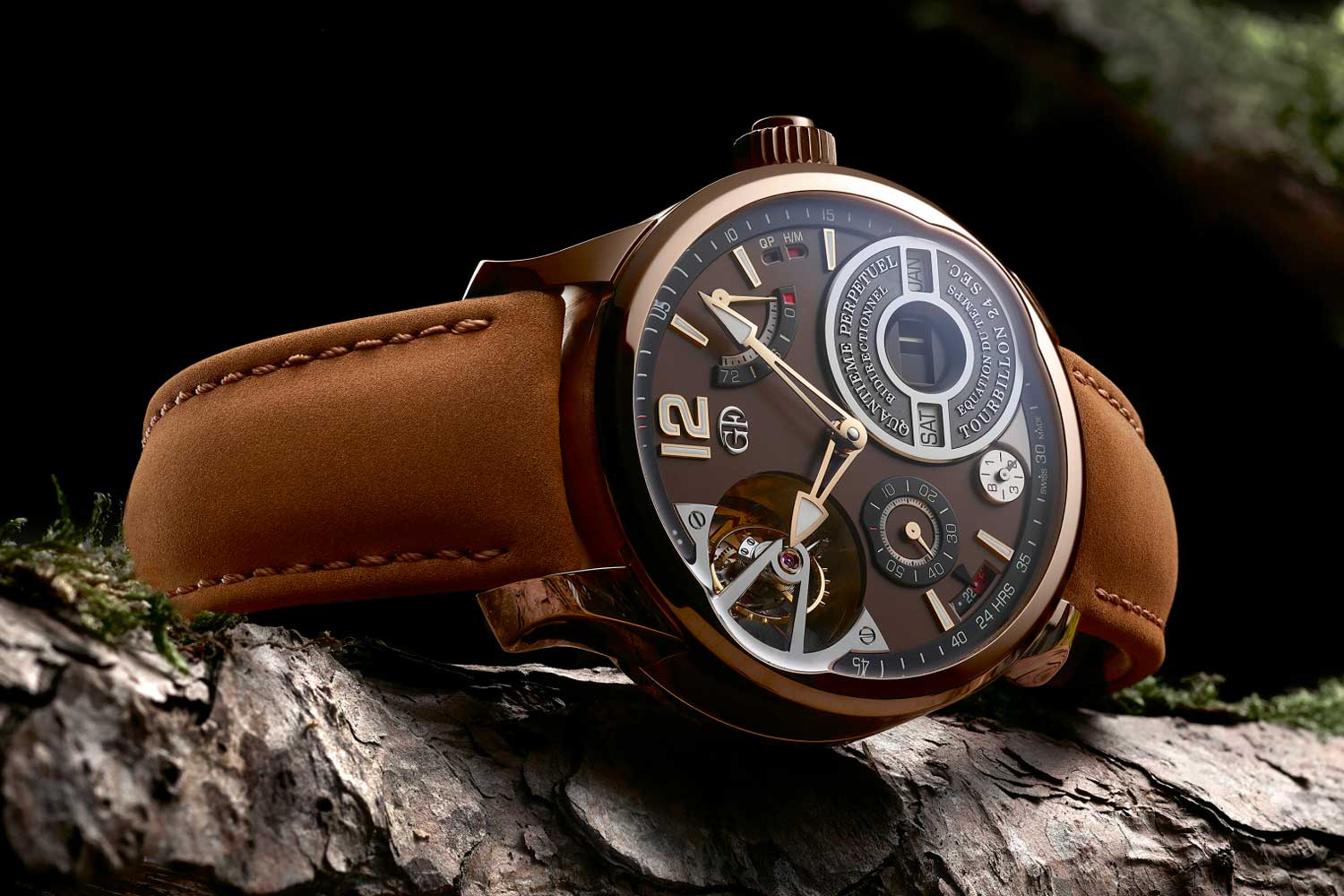
This year high-end producer Greubel Forsey Breitling's flat-packed packaging is a less wasteful way forward eschewed leather straps in favour of exclusively plant-based alternatives
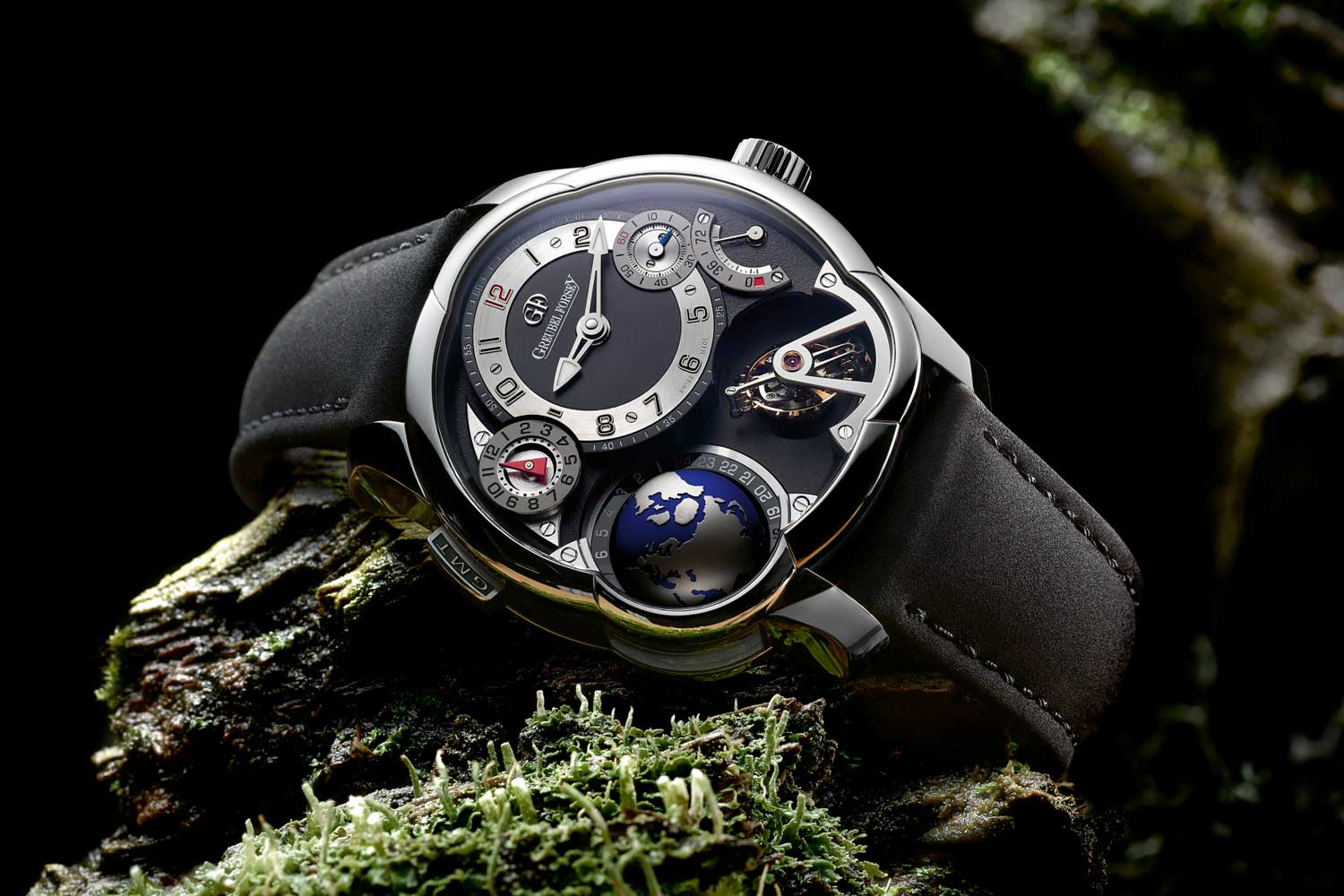
This year high-end producer Greubel Forsey Breitling's flat-packed packaging is a less wasteful way forward eschewed leather straps in favour of exclusively plant-based alternatives
Panerai and the Quest for the Recycled Watch
This year, Panerai raised the recycled bar with PAM 1225, the Submersible eLAB-ID, an impressive, limited concept watch that is 98.6 percent recycled, down to the Super-LumiNova on the dial.
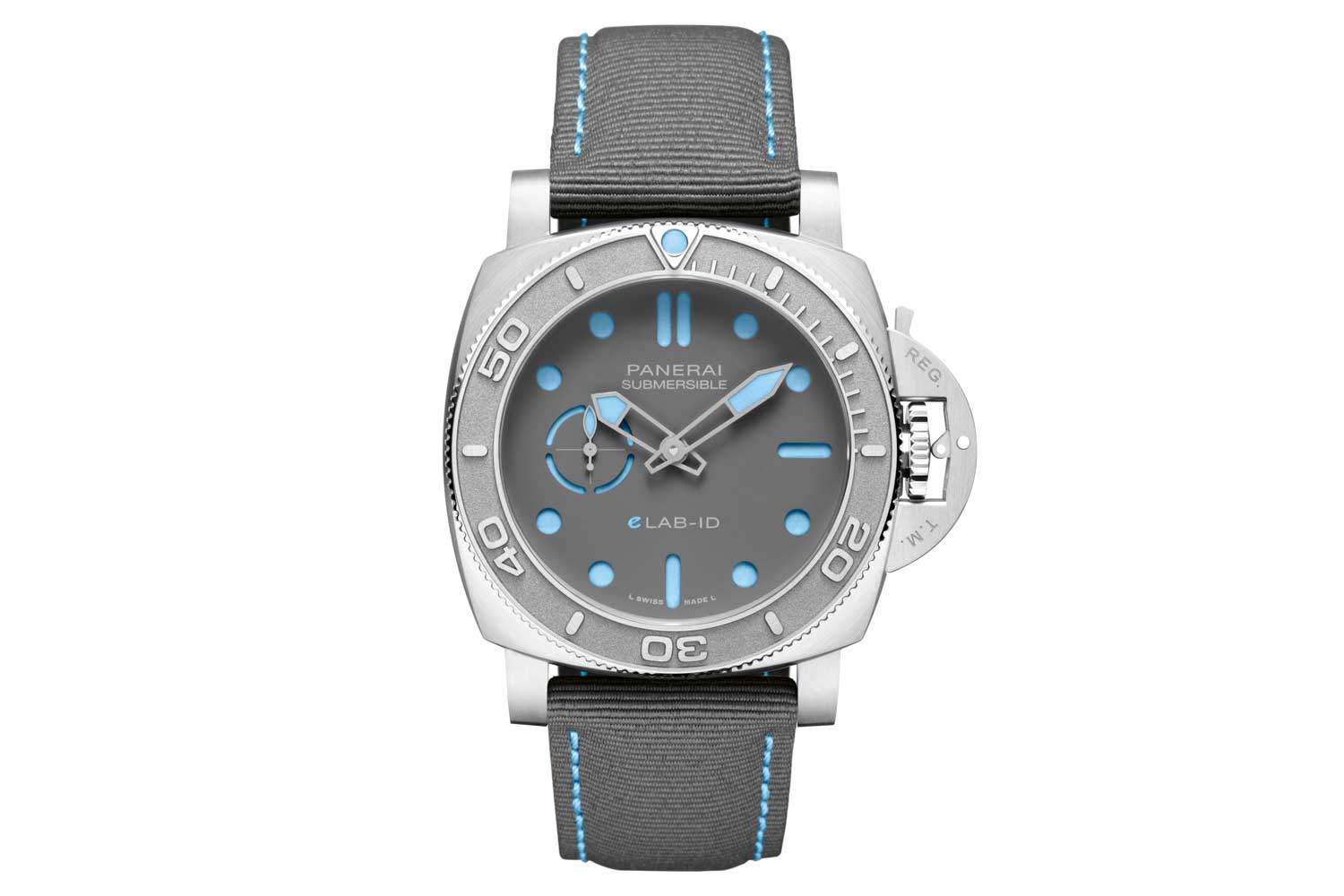
Comprising 98.6 percent recycled components, the Panerai Submersible eLAB-ID represents the bold future of environmentally responsible watch production
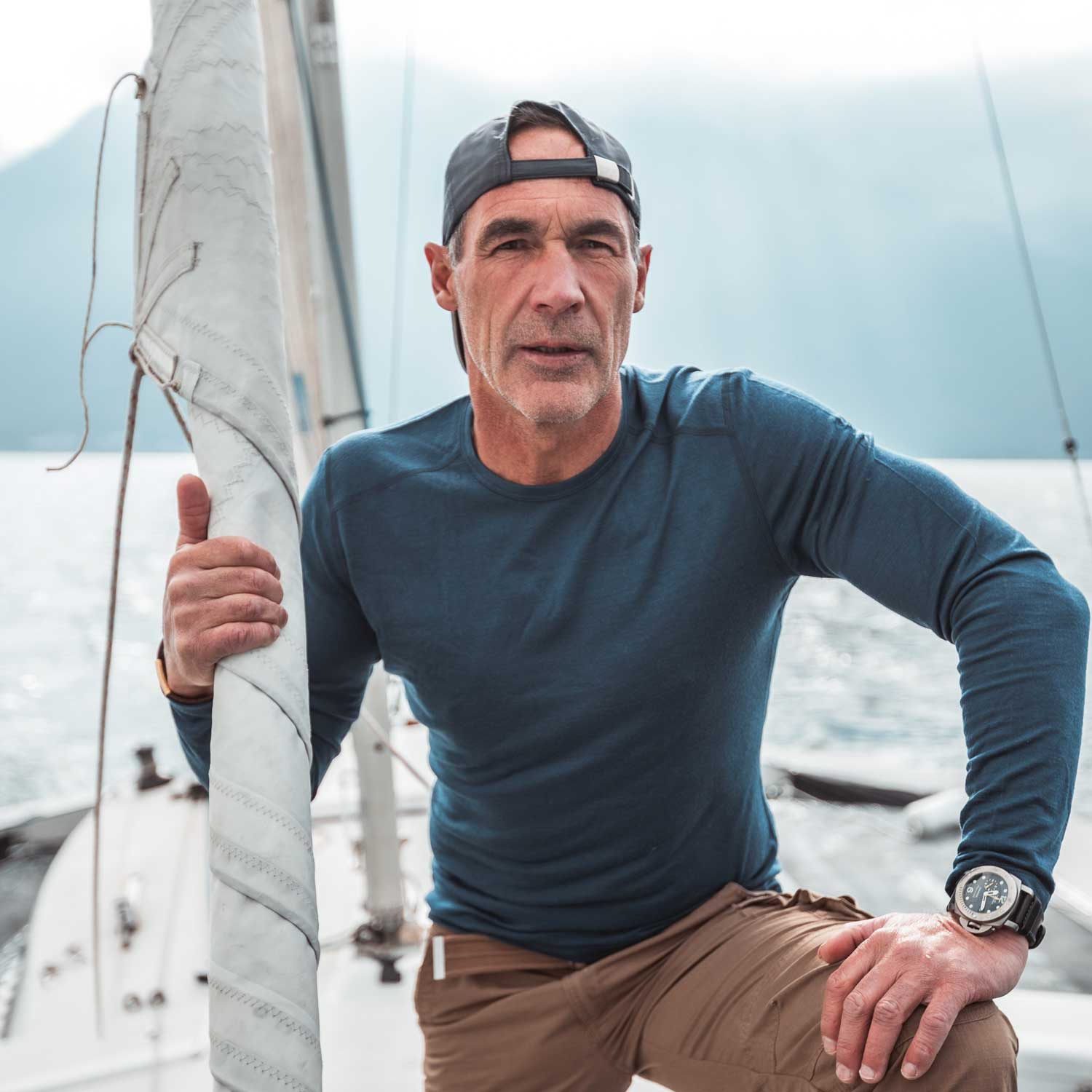
Adventurer and long-time Panerai ambassador Mike Horn kick-started the brand’s recycling initiative
While these two new products are laudable, they represent a fraction of the bigger change underway at Panerai. Not only is the brand working towards a model where all Panerai watches have a recycled element, Pontroué wants to share the lessons Panerai took years to learn. “I have been in touch with many of our competitors — I have told them ‘don’t lose three years like we did’ because, before coming to the eLAB-ID, we failed 100 times. We had to create a network of suppliers, some of them new to the watch industry. [I told them to] use what we’ve been doing. It is better if they use our system rather than lose three years to make it happen. Panerai alone will not save the world. If there can be a couple of us — major operators in the watch industry — going in that direction, it will create a critical mass that will have an impact on the new generation. We have regular visits to our manufacture from other watch brands, to whom we give our advice, our costs, our suppliers, our protocols — everything they want to know. They cannot copy our Luminor watch, but they can apply this approach of sourcing to any of their products. This year, we’ve started a new chapter, and we have to make it a long-lasting one because cleaning the oceans will take years.”
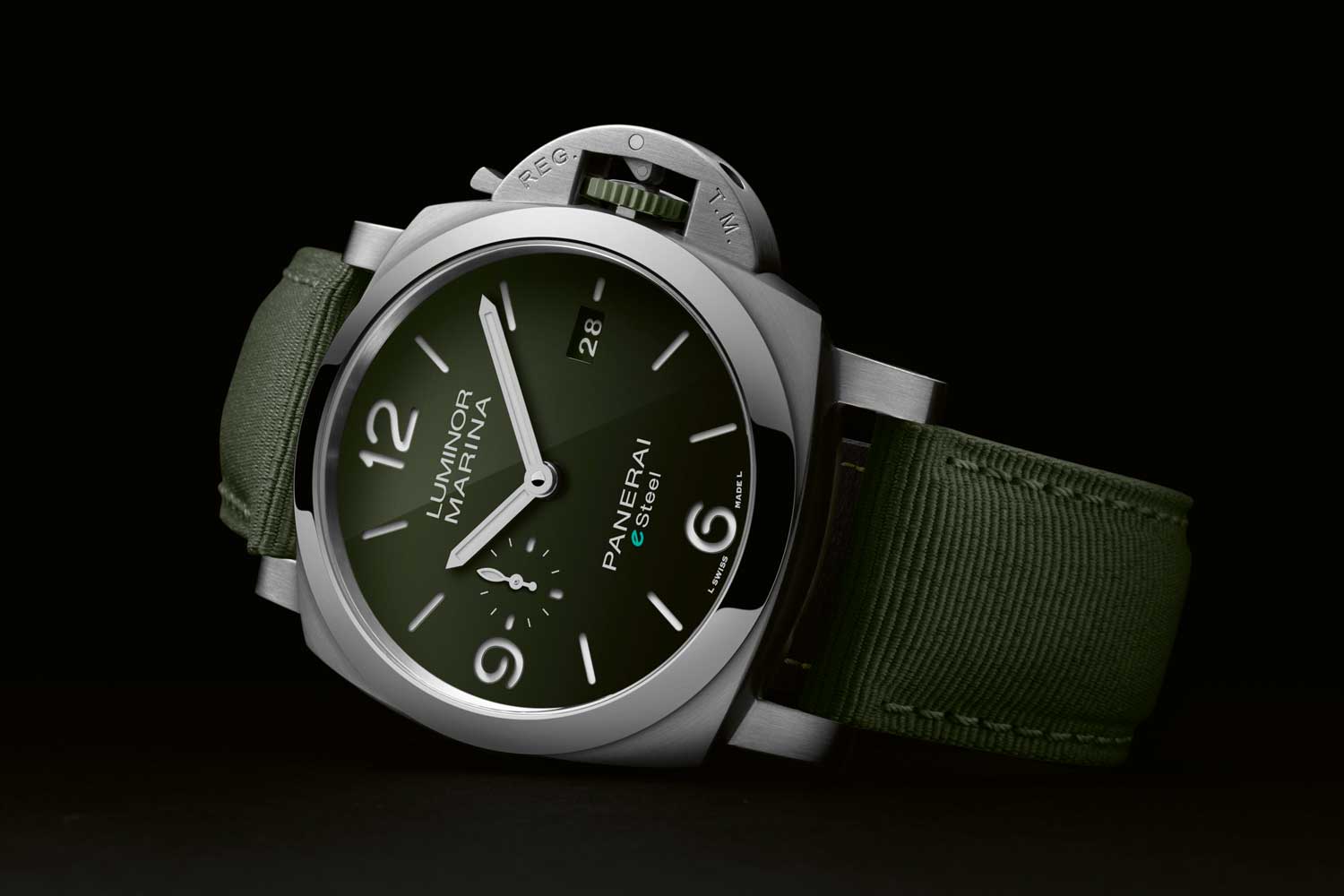
The familiar shape of the Luminor Marina case belies the fact that more than half of this eSteel reference is recycled
Unlike green dials, watchmaking’s green makeover isn’t a fad. It’s a significant structural change that is set not just to change how watches are made, but also what we value in them. The days of the over-the-top wooden display box are numbered, replaced with producers and consumers who recognize their place in the world and want to make that world better. A single watch might not change the world, but an entire highly influential and aspirational industry advocating for more conscious, less wasteful consumption? Well, that might make a difference.










